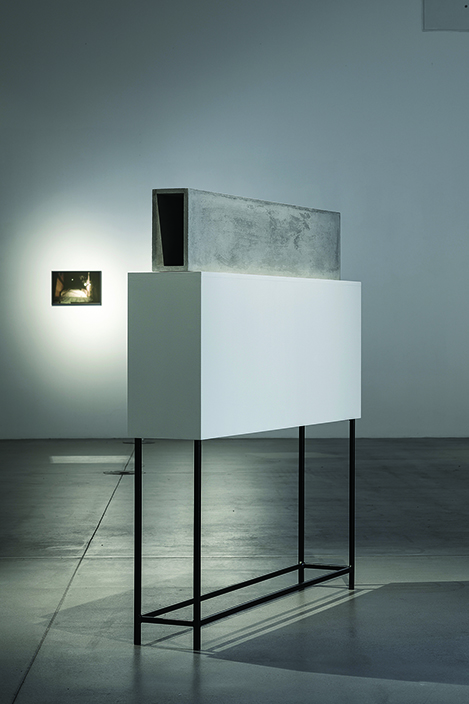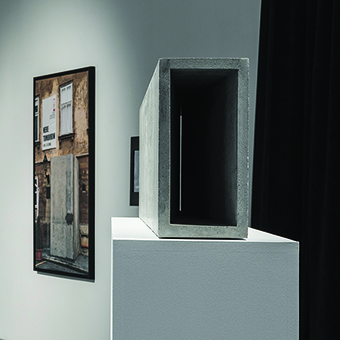Concrete object, 15 x 30 x 150 cm
A larger model in the exhibition has the shape of an open-ended tunnel. In the larger, life-size sculpture it represents, people will be able to walk into it at both ends. Advancing into the shaft, they will become enveloped by darkness, until they come to what feels like a wall, which has a vertical slit from top to bottom. The opening onto the tunnel’s other side, its mirror image, is so narrow, it would not really be possible to see who is standing in other side of the tunnel. Only light and sound would pass through to give people on both sides a notion of the other’s presence.
The British painter Michael Simpson makes paintings of leper squints, or hagioscopes, the apertures in medieval church walls that were designed to allow lepers – social outcasts – to witness mass at the altar without the risk of contaminating the rest of the congregation. In his paintings, Simpson paints steps and ladders that lead up to and, cruelly, fall just short of the openings. Since the apertures are black painted surfaces, we are left guessing what might lie beyond them. Such is the nature of painting. It is a practice that raises all manner of questions, about faith, life, death and dynamics of social exclusion. In Kopljar’s sculpture, which has the title K22 Failure (2019) – these issues arise too. But here the opening is physically present and, although it may be seen as a paradigm for the failure of communication, in which each person stands enclosed by their own limitations, it is not entirely without hope: after all, the people on both sides languish in the same state of exclusion. The work may create isolation, but can also provide grounds for empathy, understanding, inclusion.



